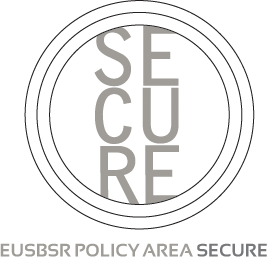About Me
Employee have interactionment and recognition are two vital elements in fostering a productive, positive work environment. Organizations are always exploring innovative ways to encourage employees, improve workplace tradition, and enhance overall performance. Among these strategies, employee ID badges—typically considered as a easy tool for access control—can play an essential role in employee interactment and recognition when strategically implemented. This article explores how organizations can leverage employee ID badges not just for security, but also as an efficient tool for boosting morale, fostering connections, and recognizing achievements.
The Role of Employee ID Badges in Employee Engagement
At first glance, an employee ID badge may seem like nothing more than a practical item for security and identification purposes. However, these badges can be transformed into powerful interactment tools. In a company, employee engagement is about creating an environment the place employees really feel valued, linked, and motivated to contribute to the corporate’s success. Employee ID badges can help these goals in a number of ways.
1. Promoting Team Spirit: Customizing ID badges with unique designs or shade codes based mostly on teams, departments, or roles can foster a sense of identity and belonging. For example, colour-coding badges for various departments or teams helps employees quickly establish their peers and builds a sense of camaraderie. When folks really feel linked to their team, it creates a more cohesive and engaged work environment.
2. Breaking Down Hierarchies: In a corporate setting, it can be simple for employees to really feel disconnected from one another because of formal hierarchical structures. Nevertheless, using ID badges which are comparable in design for all employees, regardless of position or seniority, can help break down these barriers. When everyone wears the identical type of badge, it signals a sense of equality and promotes a more inclusive workplace tradition, contributing to better employee have interactionment.
3. Creating Personalized Experiences: Personalizing employee badges might be an impactful way to make individuals really feel recognized and valued. By adding small touches, resembling including an employee’s achievements or particular milestones on their badge (e.g., "Employee of the Month," "5 Years of Service"), organizations show employees that their contributions are usually not only acknowledged but additionally celebrated. When employees really feel valued, they're more likely to be engaged and motivated in their roles.
Using ID Badges for Employee Recognition
Recognition plays a critical function in keeping employees motivated and committed to their work. Publicly acknowledging an employee’s achievements can strengthen their connection to the group and enhance their total job satisfaction. Employee ID badges could be a subtle yet efficient way to acknowledge outstanding performances.
1. Highlighting Achievements: Employee badges can feature personalized recognition elements that celebrate individual accomplishments. For example, badges can include stickers or small symbols representing milestones, reminiscent of years of service, sales targets met, or project successes. This easy visual cue serves as a constant reminder to both the employee and their colleagues of the individual’s contributions. When this recognition is seen, it not only boosts the morale of the recognized employee but in addition inspires others to strive for related achievements.
2. Gamification of Recognition: Organizations can incorporate a gamification side into their employee badge system. As an example, implementing a factors or rewards system that employees can earn through their every day efforts or achieving specific goals allows them to showcase their progress with special "achievement badges." These badges may very well be up to date frequently to replicate ongoing achievements. This type of recognition makes the process more interactive and engaging, offering an opportunity for friendly competition and enhancing employees' connection to the corporate's success.
3. Encouraging Peer-to-Peer Recognition: Employee ID badges can also be used as a tool for peer-to-peer recognition. By including a function on badges that enables employees to acknowledge each other for particular achievements or good deeds (equivalent to a "Thank You" or "Great Teamwork" sticker), organizations promote a culture of mutual respect and appreciation. Employees feel more related to each other, and the recognition becomes more meaningful when it comes from peers somewhat than just management.
Sensible Ideas for Implementing Employee ID Badge Programs
To efficiently use employee ID badges for interactment and recognition, organizations should consider the next:
- Customization: Work with employees to design badges that resonate with them. Whether it’s adding enjoyable graphics, motivational quotes, or recognition symbols, customizing badges makes employees feel special and valued.
- Frequent Updates: Repeatedly replace badges to mirror new achievements, milestones, or changes. This shows that employee recognition is ongoing and never a one-time event.
- Visibility and Accessibility: Be certain that recognition elements on badges are seen and simply identifiable. This can be carried out through colour coding, symbols, or words that highlight accomplishments.
- Gamify the Expertise: Consider integrating some extent system or reward system with badges. This can encourage employees to pursue recognition and actively interact in activities that benefit the organization.
Conclusion
Employee ID badges are more than just identification tools; they're an opportunity to foster engagement, recognize achievements, and create a sense of belonging within the workplace. By integrating engagement and recognition elements into the design of ID badges, organizations can enhance employee satisfaction, enhance morale, and drive productivity. When employees really feel recognized and valued, they're more likely to be motivated, committed, and engaged in their work, contributing to a positive and thriving work culture.
If you enjoyed this write-up and you would like to receive even more information relating to id badges for employees kindly check out the page.
Location
Occupation





